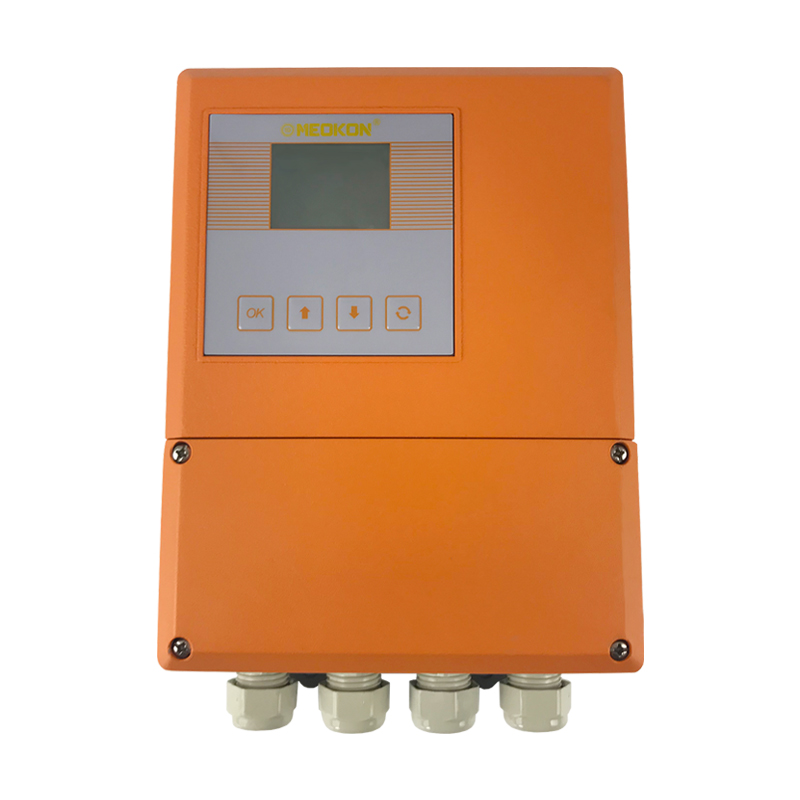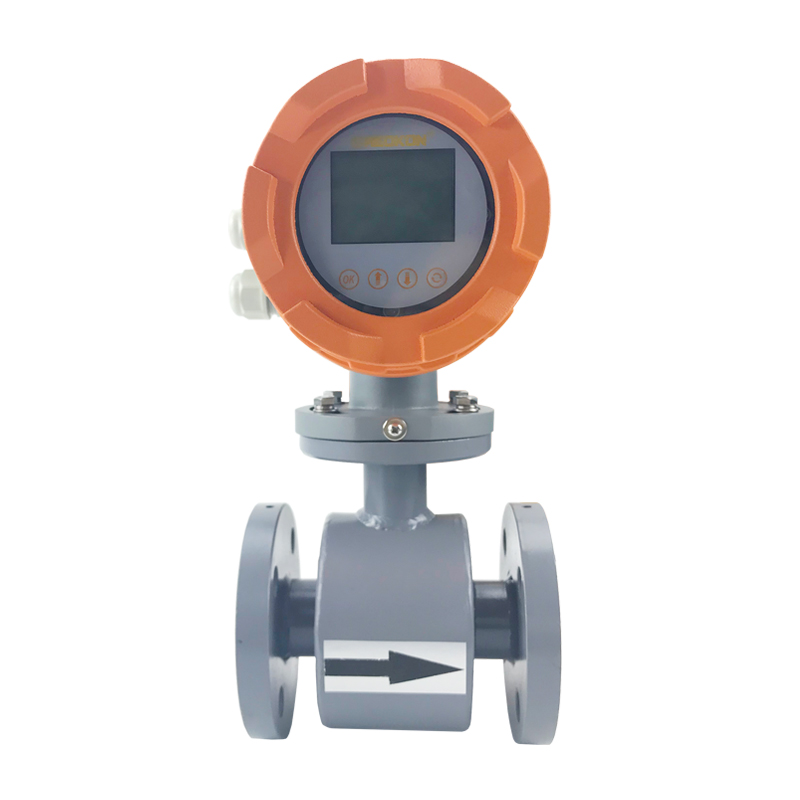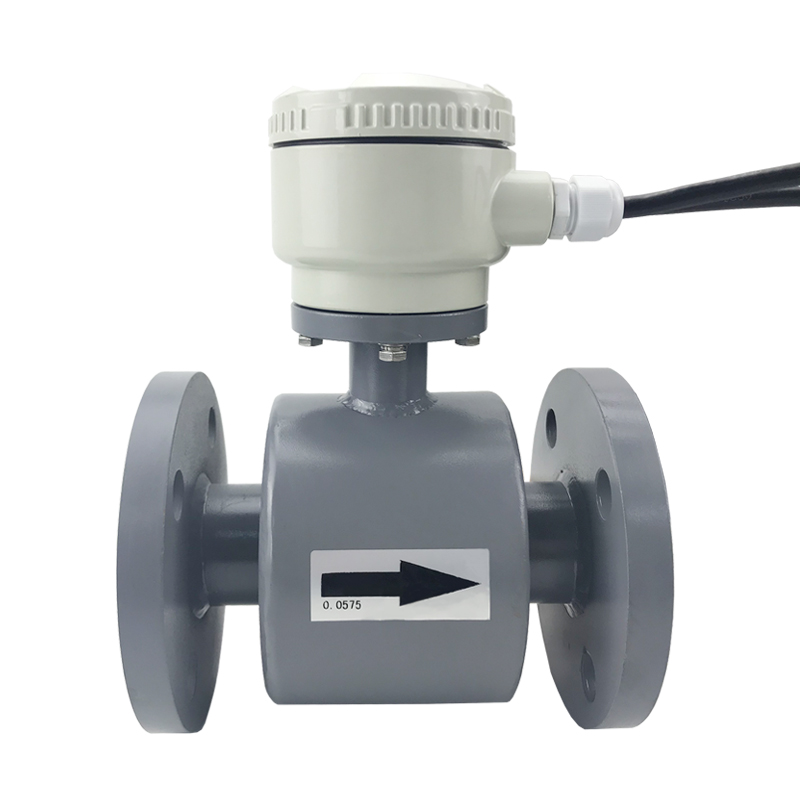
For industrial electronic sensor equipment, the measurement principle of electromagnetic flowmeter is Faraday’s law of electromagnetic induction. The structure of electromagnetic flowmeter is mainly composed of magnetic circuit system, measuring conduit, electrode, shell, lining and converter. It is mainly used to measure the volume flow of conductive liquids and slurries in closed pipes. Including acids, alkalis, salts and other highly corrosive liquids. This product is widely used in petroleum, chemical, metallurgy, textile, food, pharmaceutical, papermaking and other industries, as well as environmental protection, municipal management, water conservancy construction and other fields.
In the process of using electromagnetic flowmeter, some equipment failures will inevitably occur. There are usually two kinds of failures in operation: one is the failure of the instrument itself, that is, the failure caused by damage to the structural parts or components of the instrument; the second, the failure caused by external causes, such as improper installation, flow distortion, deposition and scaling, etc.
When an electromagnetic flowmeter fails, we usually need to analyze which component is at fault and then figure out how to fix the problem.
1. Common faults of electromagnetic flowmeter – electromagnetic flowmeter has no flow signal output
This type of failure is very common during use, and the reasons are generally:
(1) The power supply of the instrument is abnormal;
(2) The cable connection and the output of the power circuit board are abnormal;
(3) The liquid flow does not meet the installation requirements;
(4) The sensor components are damaged or there is an adhesive layer on the inner wall of the measurement;
(5) Damaged converter components
How to solve?
If this happens, first check whether the power supply of the instrument is faulty, confirm that the power supply is connected, check whether the output voltage of the power supply circuit board is normal, or try to replace the entire power supply circuit board to determine whether it is good. Check that the cables are intact and connected correctly. Check the liquid flow direction and the liquid in the pipe is full. If there is no liquid in the sensor, you will need to replace the tubing or change the mounting method. Try installing it vertically.
2. The signal of the electromagnetic flowmeter is getting smaller and smaller or the signal suddenly drops
Most of these faults are caused by the influence of the measuring medium or the external environment, and the fault can be eliminated by itself after the external interference is eliminated. In order to ensure the accuracy of the measurement, such failures cannot be ignored. In some production environments, due to the large vibration of the measuring pipe or liquid, the circuit board of the flowmeter will be loosened, and the output value may also fluctuate.
How to solve?
(1) Confirm whether it is the reason for the process operation, and the fluid does pulsate. At this time, the flowmeter only reflects the flow condition truthfully, and the fault can be eliminated by itself after the pulsation ends.
(2) Electromagnetic interference caused by external stray currents, etc. Check whether there are large electrical appliances or electric welding machines working in the operating environment of the instrument, and make sure that the instrument is grounded and the operating environment is good.
(3) When the pipeline is not filled with liquid or the liquid contains air bubbles, both are caused by process reasons. At this time, the technician can be asked to confirm that the output value can return to normal after the liquid is full or the air bubbles are calmed down.
(4) The circuit board of the transmitter is a plug-in structure. Due to the large vibration of the on-site measurement pipeline or liquid, the power board of the flowmeter is often loosened. If it is loose, the flowmeter can be disassembled and the circuit board can be re-fixed.
3. The zero point of the electromagnetic flowmeter is unstable
Cause Analysis
(1) The pipeline is not filled with liquid or the liquid contains air bubbles.
(2) Subjectively, it is believed that there is no flow of liquid in the tube pump, but there is actually a small flow.
(3) The reasons for the liquid (such as poor uniformity of liquid conductivity, electrode pollution, etc.).
(4) The insulation of the signal circuit is lowered.
How to solve?
It is necessary to check whether the medium is full of pipes and whether there are air bubbles in the medium. If there are air bubbles, an air eliminator can be installed upstream of the air bubbles. The horizontal installation of the instrument can also be changed to vertical installation. Check whether the instrument is well grounded. The grounding resistance should be less than or equal to 100Ω; the conductivity of the conductive medium should not be less than 5μs/cm. If the medium accumulates in the measuring tube, it should be removed in time. Avoid scratching the lining during removal.
Post time: Aug-11-2022


